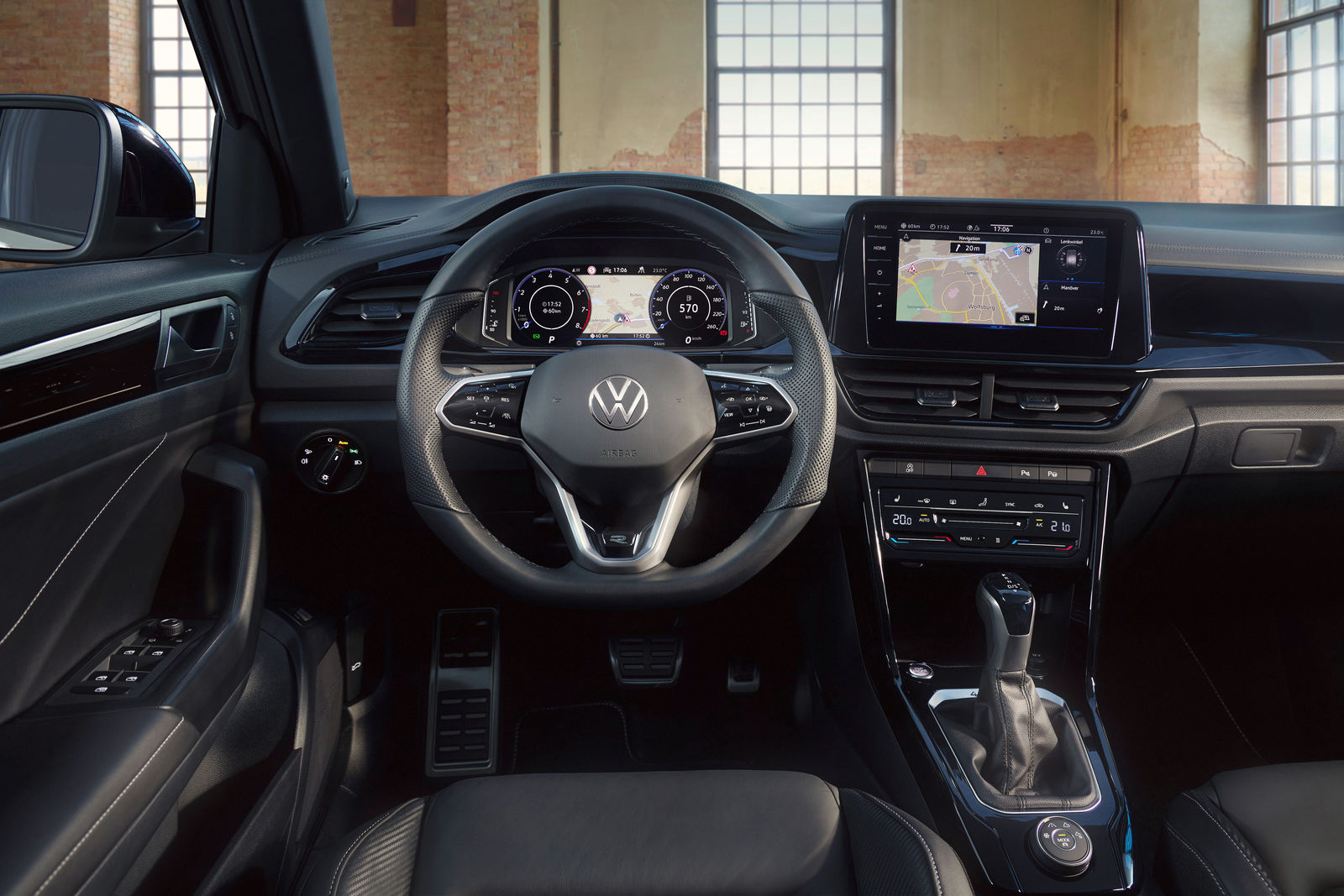IQ.DRIVE Travel Assist1/2. Volkswagen consolidates the systems it develops for assisted driving under the umbrella brand IQ.DRIVE. One central component of this is the driver assist system Travel Assist1/2, and this is now available in the T-Roc for the first time. This system takes over the steering, braking and acceleration of the vehicle at speeds of up to 210 km/h. IQ.DRIVE Travel Assist is able to draw on familiar systems: longitudinal control is supported by Adaptive Cruise Control ACC, while lateral control uses the standard lane keeping assistant Lane Assist2. The system is activated at the touch of a button via the Travel Assist button in the newly designed leather multifunction steering wheel. After doing so, the driver must keep their hands on the wheel. To ensure this happens as required, new capacitive surfaces on the steering wheel of the T-Roc register the contact electronically. The driver always has ultimate control and must be ready to override the assist system at any time should the situation require it.
Predictive ACC1/2. In the new T-Roc, the current generation of Adaptive Cruise Control (ACC) with speed limiter is standard in the Style, R-Line and R models as well as in the T-Roc Cabriolet. Models with 7-speed DSG have the stop&go function in addition to Adaptive Cruise Control. By integrating the signals from the front camera, as well as GPS and map data for models with a navigation system, the assist system can predictively incorporate local speed limit information, town boundary signs, junctions and roundabouts. In complex situations, the standard Autonomous Emergency Braking system2 Front Assist can now react even more effectively to persons crossing the road, and the lane keeping system Lane Assist2 has now been improved for better recognition of both lane markings and natural lane boundaries such as green spaces.
Side Assist1/2. The Side Assist lane change system in the new T-Roc contributes even more effectively to safe driving on multi-lane roads. Available for use at speeds of 10 km/h and over, the system warns the driver of any potential collision risk when the turn signal is activated to change lanes. In stop-start traffic, slow-moving vehicles are detected in the blind spot in the adjacent lane. On motorways, the system also detects vehicles approaching at speed from a greater distance.
The detection range of Side Assist1/2 is up to 60 metres: the warning consists of a flickering LED signal in the exterior mirror. In addition, the system initiates counter-steering via Lane Assist before a dangerous situation can occur.
Parking distance warning system Park Assist1/2. The new T-Roc can enter and exit parking spaces automatically with the optional Park Assist1/2. This system can be activated at the touch of a button in the centre console, and detects on which side the vehicle is to be parked based on the turn signal selected by the driver. Assisted parking can start as soon as a sufficiently large parking space (a manoeuvring distance of 40 cm at the front and rear is sufficient) has been detected via the ultrasonic sensors. After engaging reverse gear, all the driver has to do is accelerate and brake as needed. The vehicle steers automatically and takes over the braking if the distance is too small. In the latest version available for the new T-Roc, Park Assist1/2 can also be used for forward parking in parking bays at right angles to the road and for exiting parallel parking spaces.
Proactive occupant protection system. Working together with Front Assist and Side Assist, the proactive occupant protection system in the new T-Roc is able to detect potentially dangerous situations – for example, when emergency braking is initiated by the activated brake assist system. It then pre-tensions the driver and front passenger seatbelts so as to ensure the best possible protection from the airbag and belt systems. If severe oversteer or understeer with ESC intervention indicates a highly critical, unstable driving situation, the system automatically closes the side windows (except for a residual gap) and the optional sunroof. This ensures that the head and side airbags are able to provide the most effective support possible. Proactive occupant protection also detects critical distance situations and helps shorten the vehicle’s stopping distance. For this purpose, the system is offered as standard in the new T-Roc in conjunction with the area monitoring system Front Assist. These two systems interact to provide the driver with a warning in dangerous situations – visually, acoustically and by means of a preventive braking jolt. In addition, the system now also detects the risk of a rear-end collision. This means that the protective measures come into effect when a vehicle approaches at high speed from behind, too. In addition, the driver behind is warned by the activation of the hazard warning lights, which flash more quickly.
